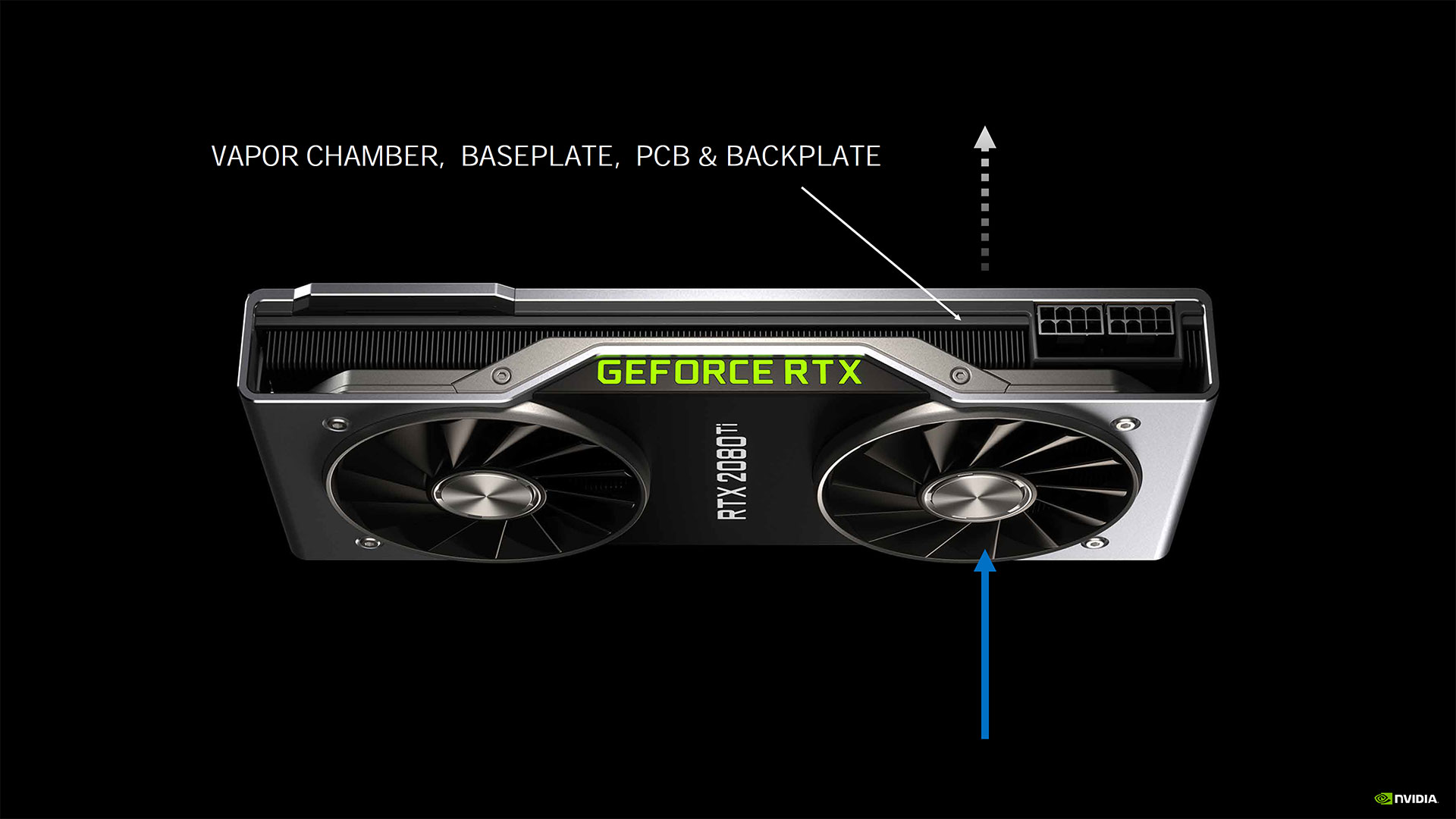A Closer Look at the GeForce RTX 3080, RTX 3090 Founders Edition Coolers
Will AIB Partner Cards Be a Better Buy vs Nvidia's Founders Cards?
For the Ampere generation of Founders Edition coolers, Nvidia had to go back to the drawing board and completely redesign the cooling solution to suit the significantly higher TDPs of the GeForce RTX 3080 and GeForce RTX 3090 graphics cards. Many of the design changes also carry over to the GeForce RTX 3070, though it doesn't have a higher TDP than previous generation GPUs.
The radical new design for the RTX 3080 and RTX 3090 Founders Edition coolers represent Nvidia's new solution to an old cooling problem, but it has also sparked a lot of controversy in the enthusiast community. Will the new cards propel more heat into your CPU's cooler, and will AIOs have a bigger benefit? Let's take a closer look at the design.
Looking back at 20-series Founders Edition coolers, it's your very typical open air design with two fans pushing air into a vapor chamber heatsink, which then gets heat dissipated out the rear and sides of the chassis.
Nvidia noticed that this cooling solution doesn't take full advantage of a modern case's default airflow configuration. Taking the standard ATX tower case as an example, there's typically one or two intake fans positioned low at the front of the case, and a single fan at the top-rear of the case that exhausts all the hot air out of the case.
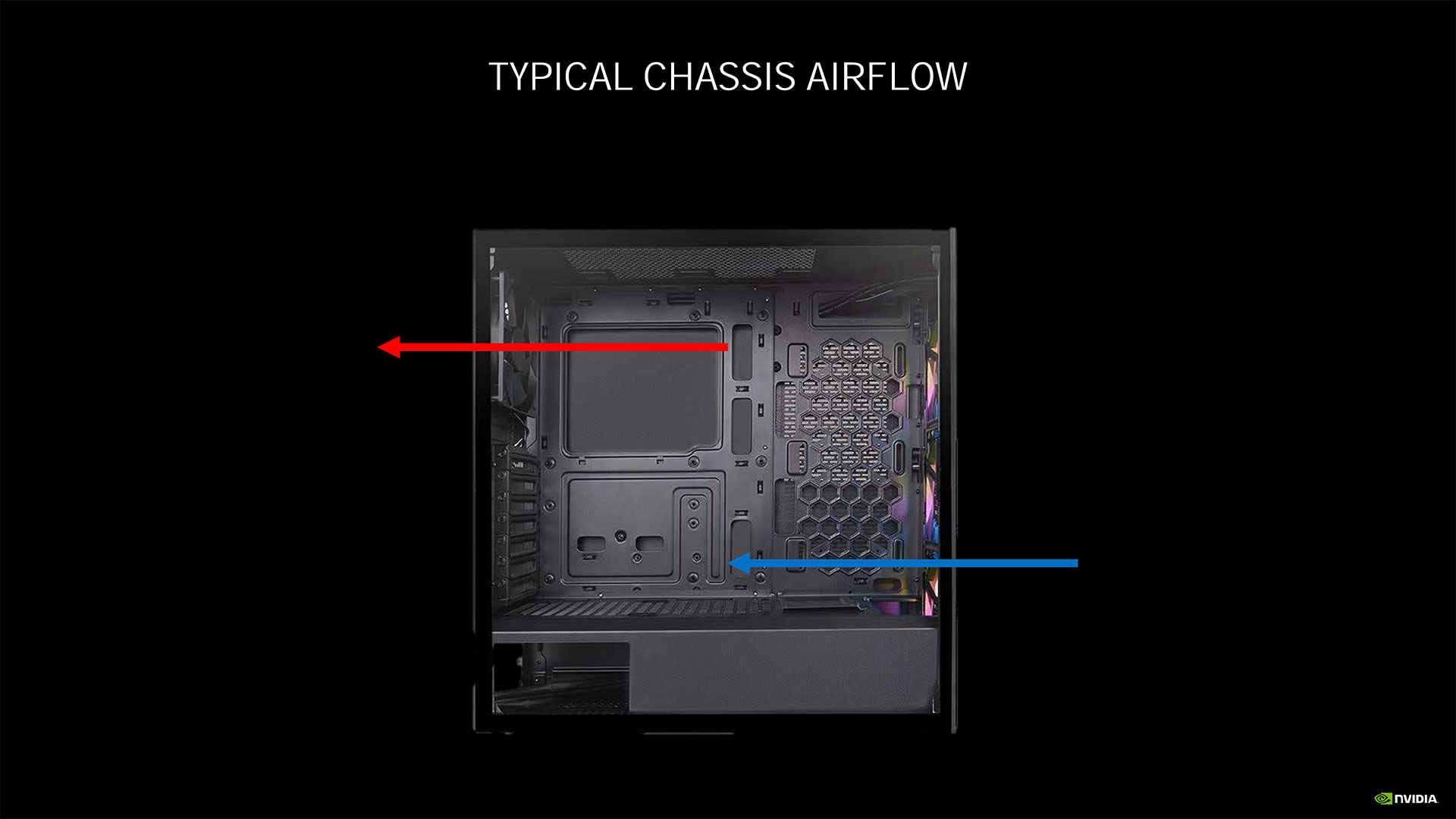
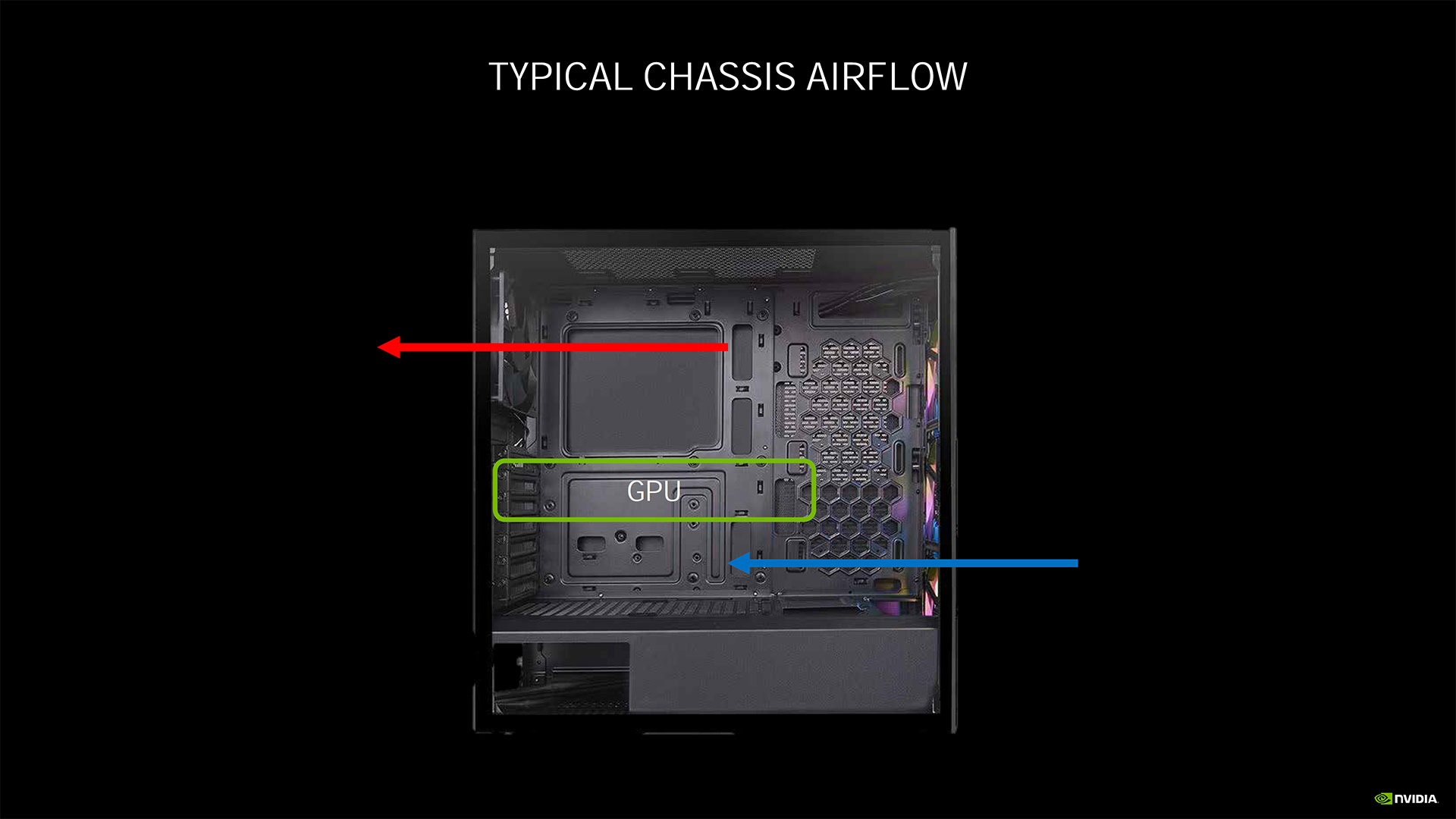
If you stick a graphics card in a case with this traditional airflow pattern, it disrupts the airflow. Instead of air passing freely from the front intake fans thru the chassis and to the rear fan, most of the air gets sucked into the GPU fans. That air is then slammed into the PCB. The design doesn't exhaust air out of the rear of the case, so it has to make a 90 degree turn and exhaust to the side. This adds resistance and moves air less efficiently.
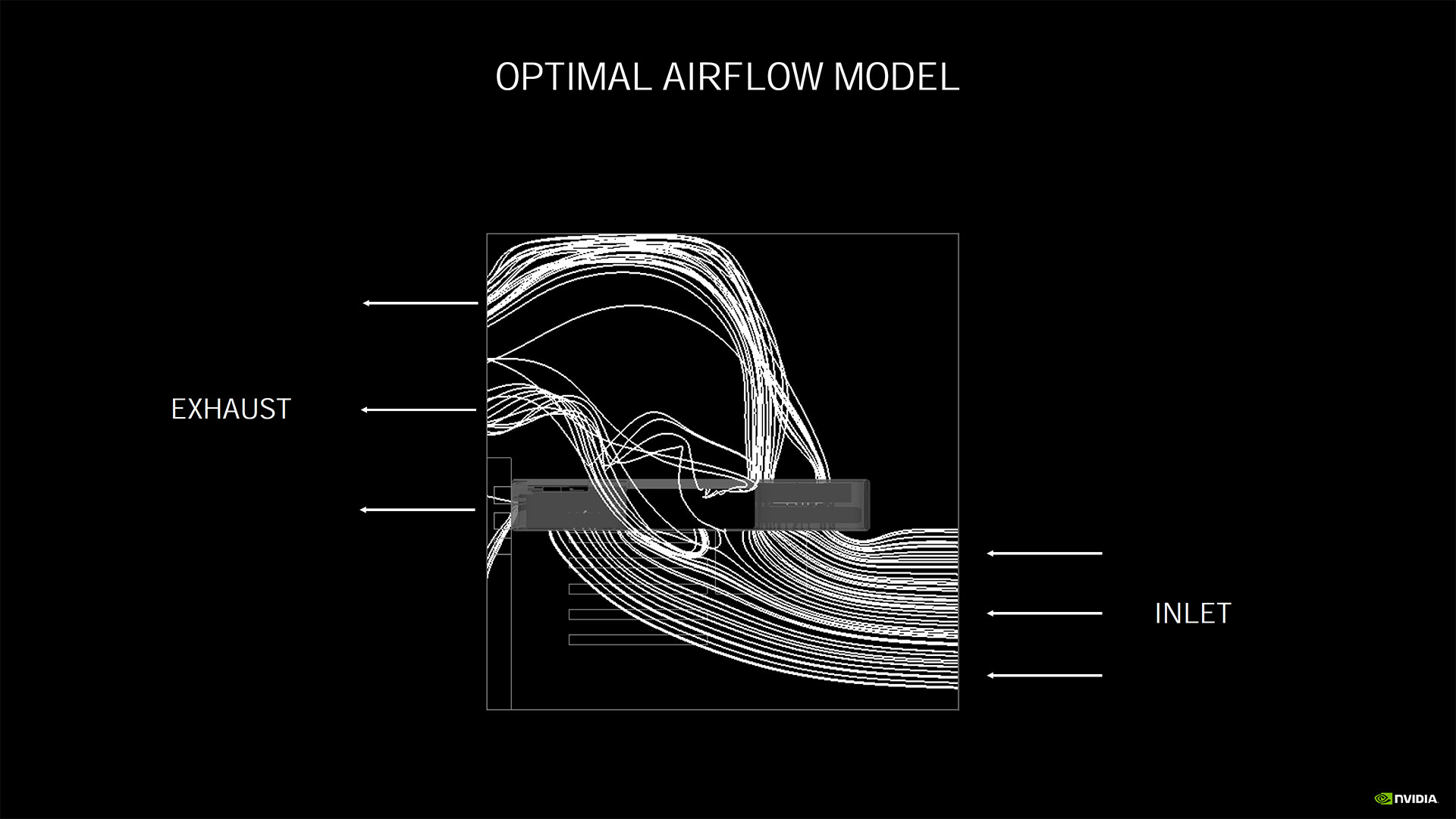
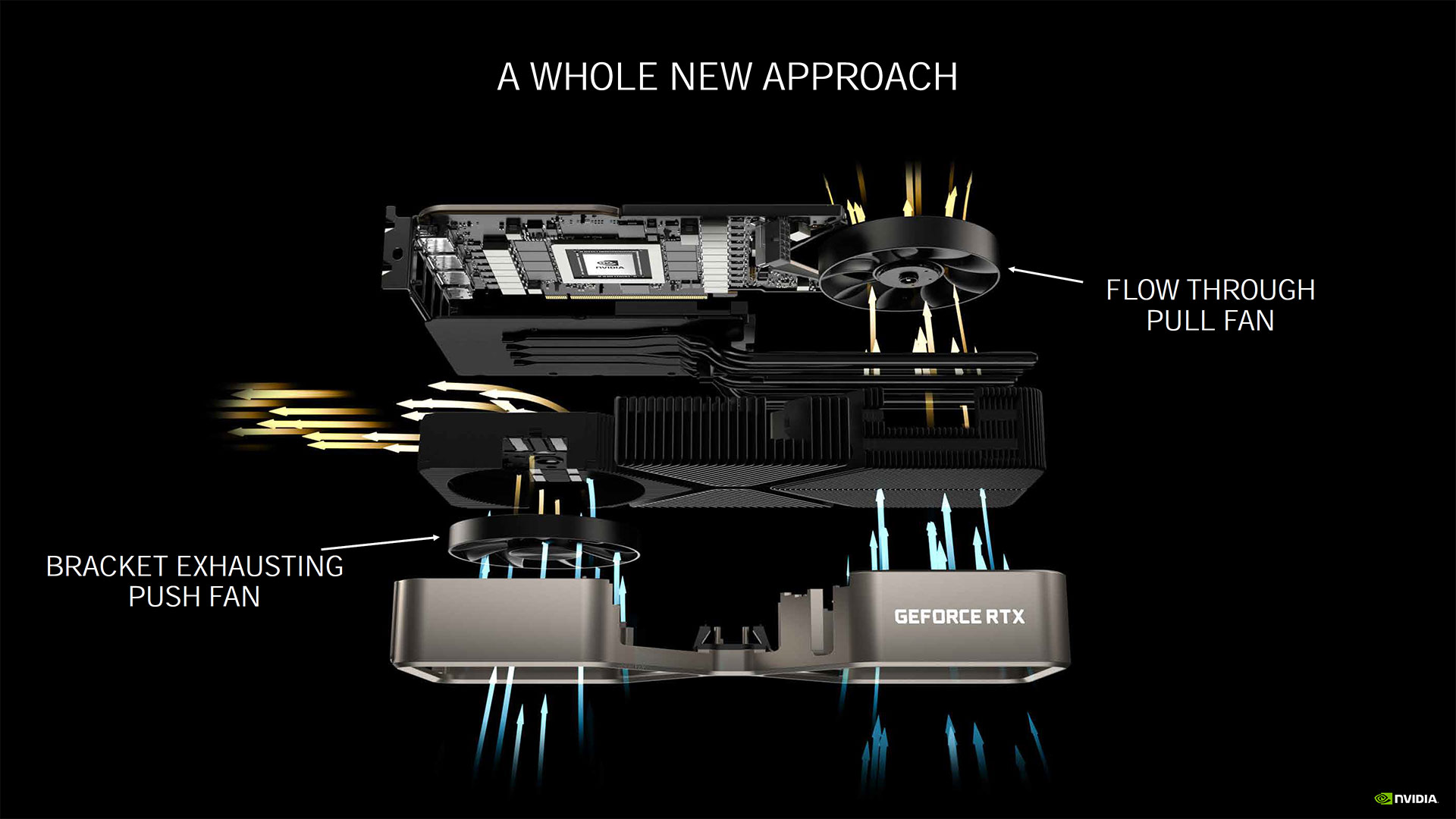
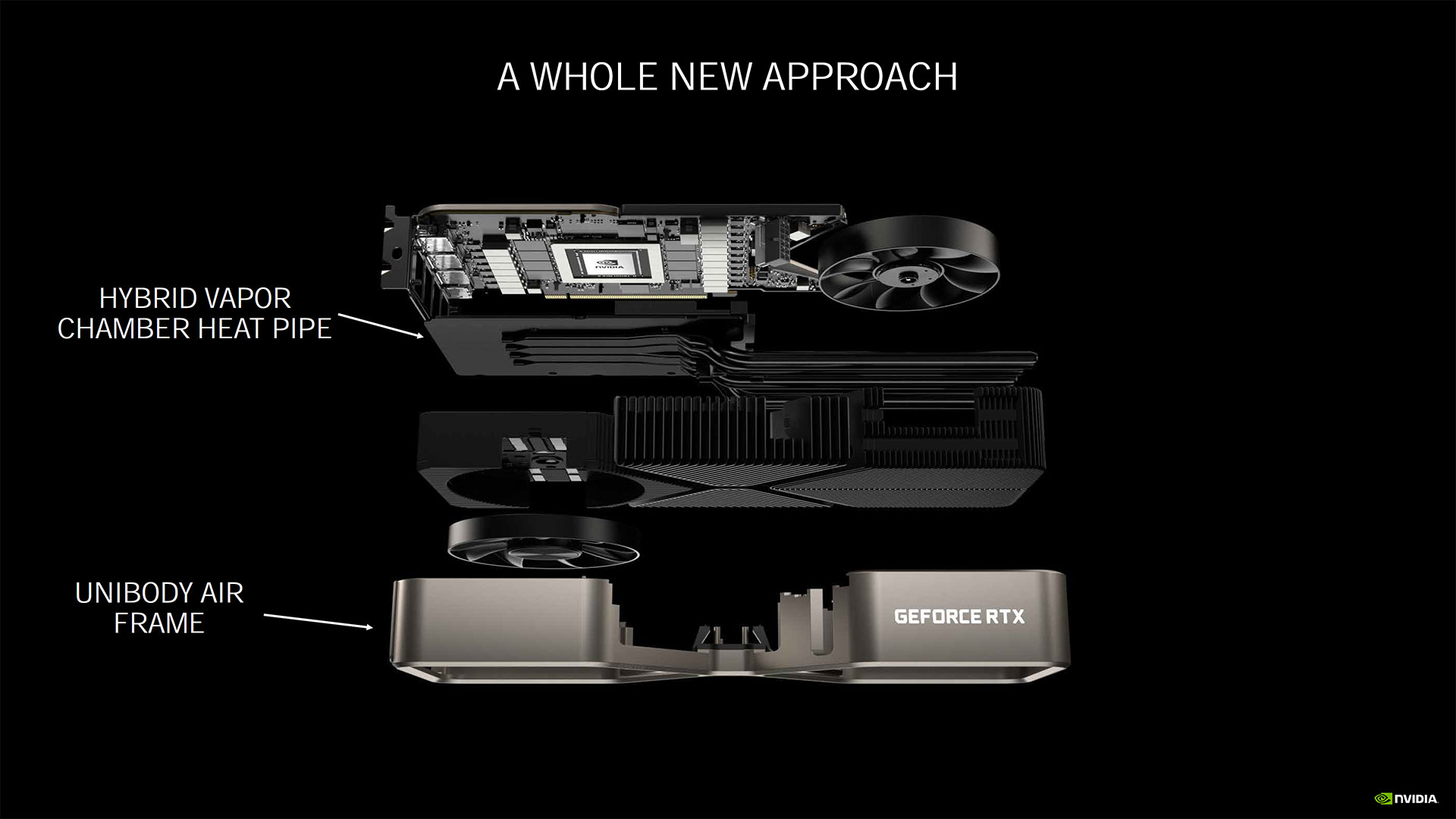
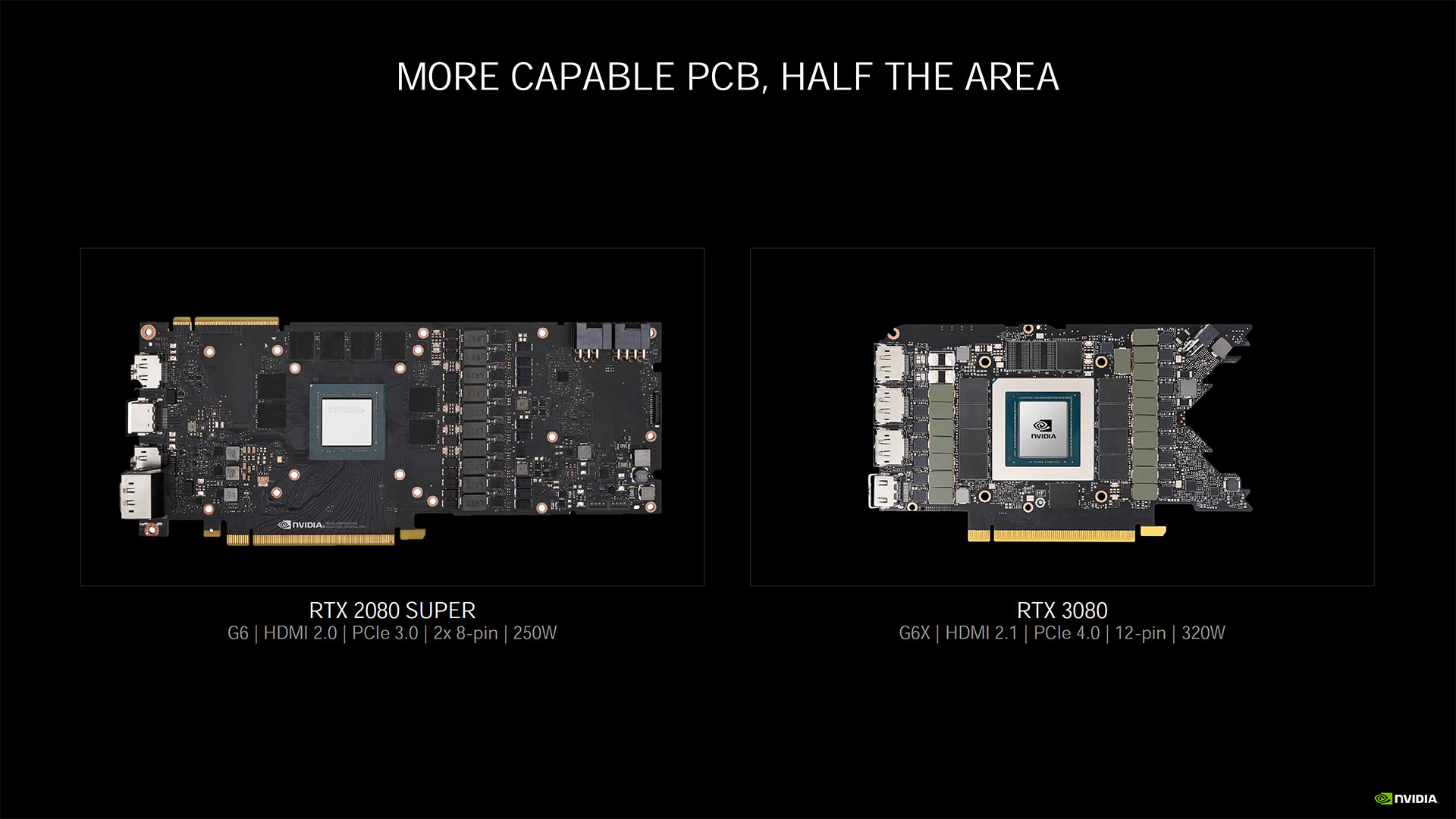
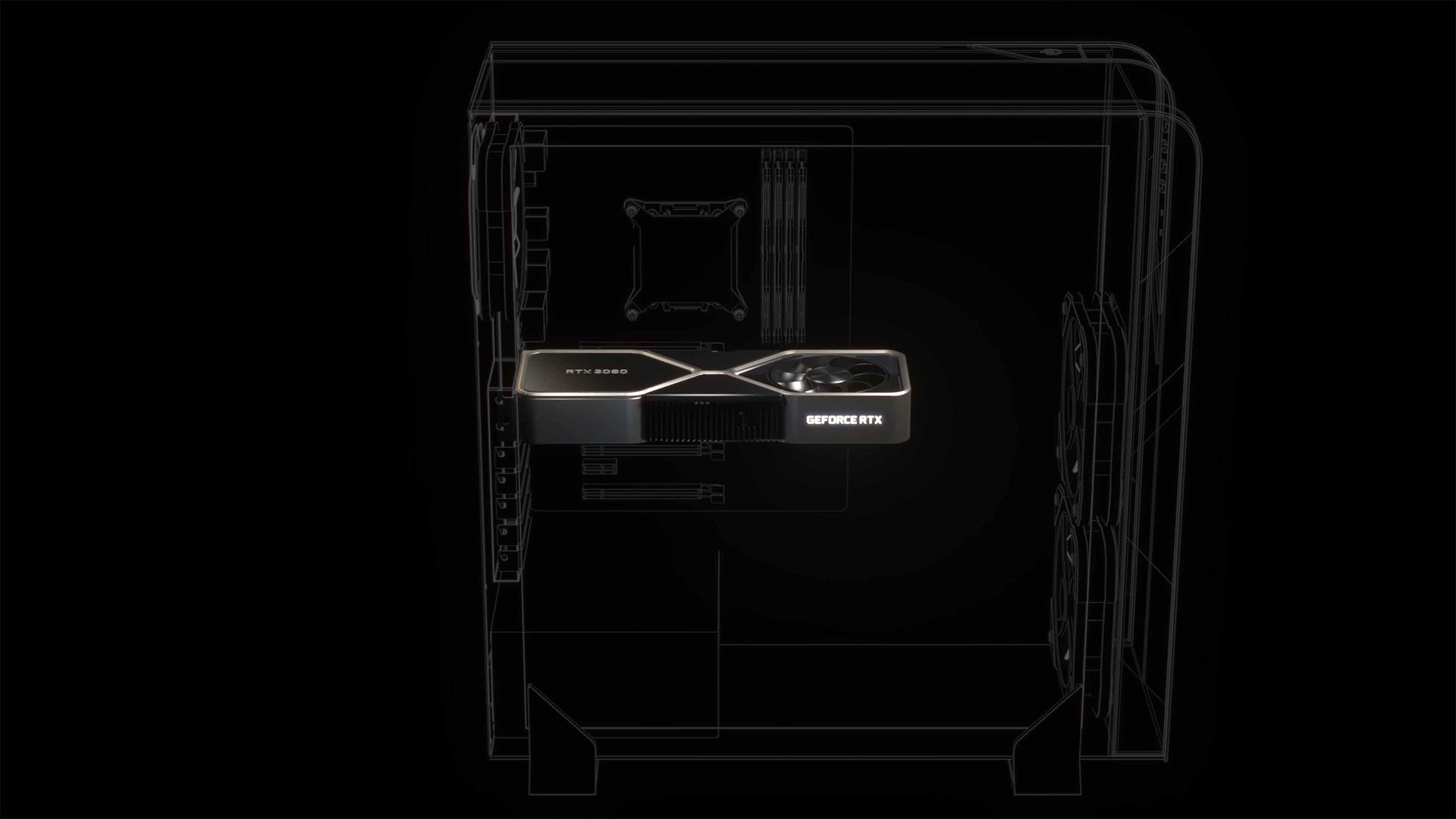
Nvidia uses a push-pull fan system with a hybrid vapor chamber cooler for the RTX 3080 and RTX 3090 coolers. The left fan pushes air onto the baseplate and exhausts out the PCI-E slot (just like a blower style cooler). The right fan pulls air through the finstack and heatpipes, which then gets exhausted right out the other side of the card and makes its way directly to your CPU tower cooler (if any). It then passes to your rear exhaust case fan.
Nvidia claims this cooling solution lowers temperatures by about 20C on the RTX 3080, and 30C for the RTX 3090 when compared to 20-series founders coolers designed for the RTX 2080 and Titan RTX (and that's if they were running at their Ampere-equivalent TDPs). Nvidia also says the new design reduces noise levels – the 3080 is 10dBA quieter than the 2080, and the 3090 is 20dBa quieter than the TITAN RTX.
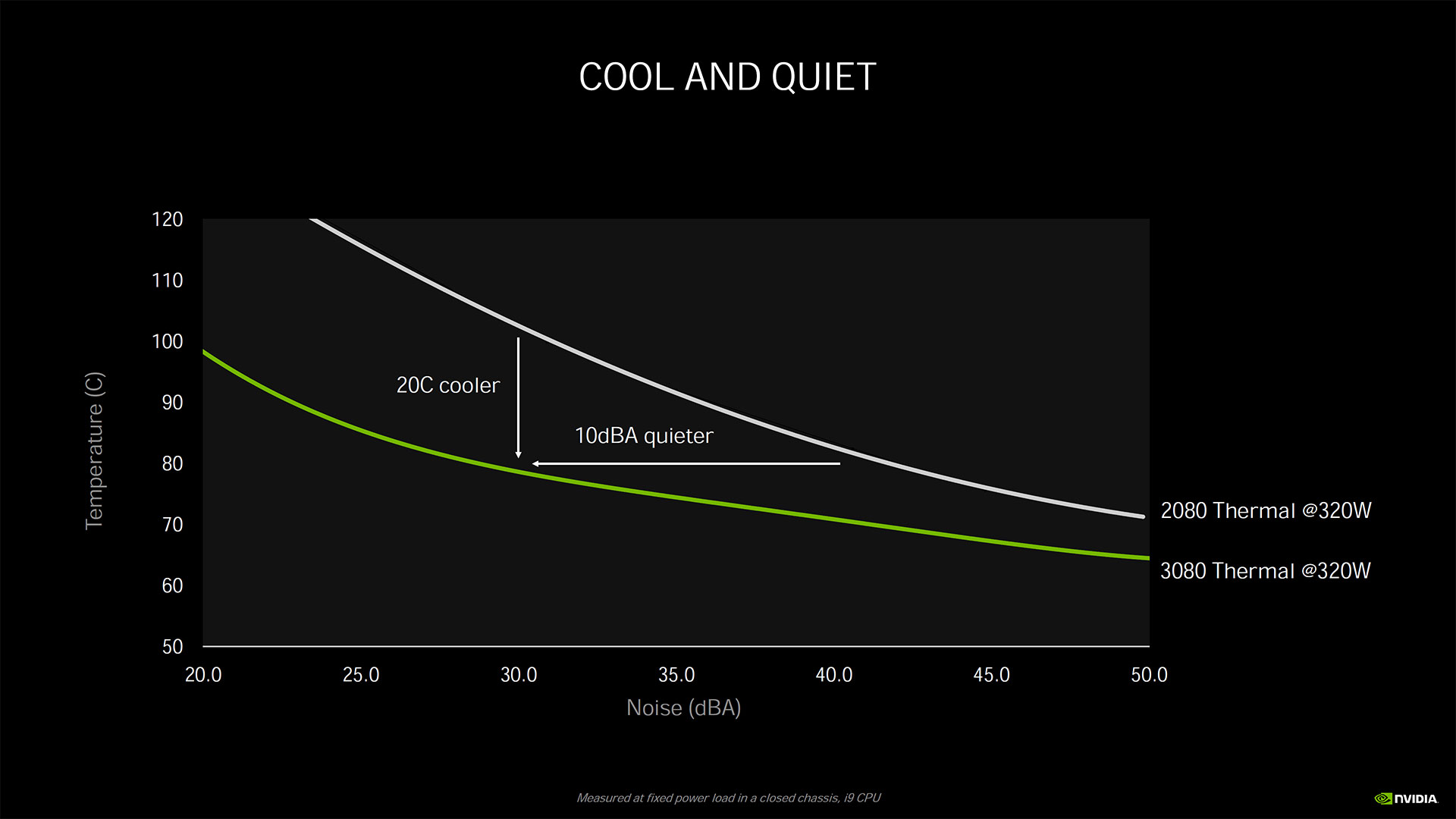
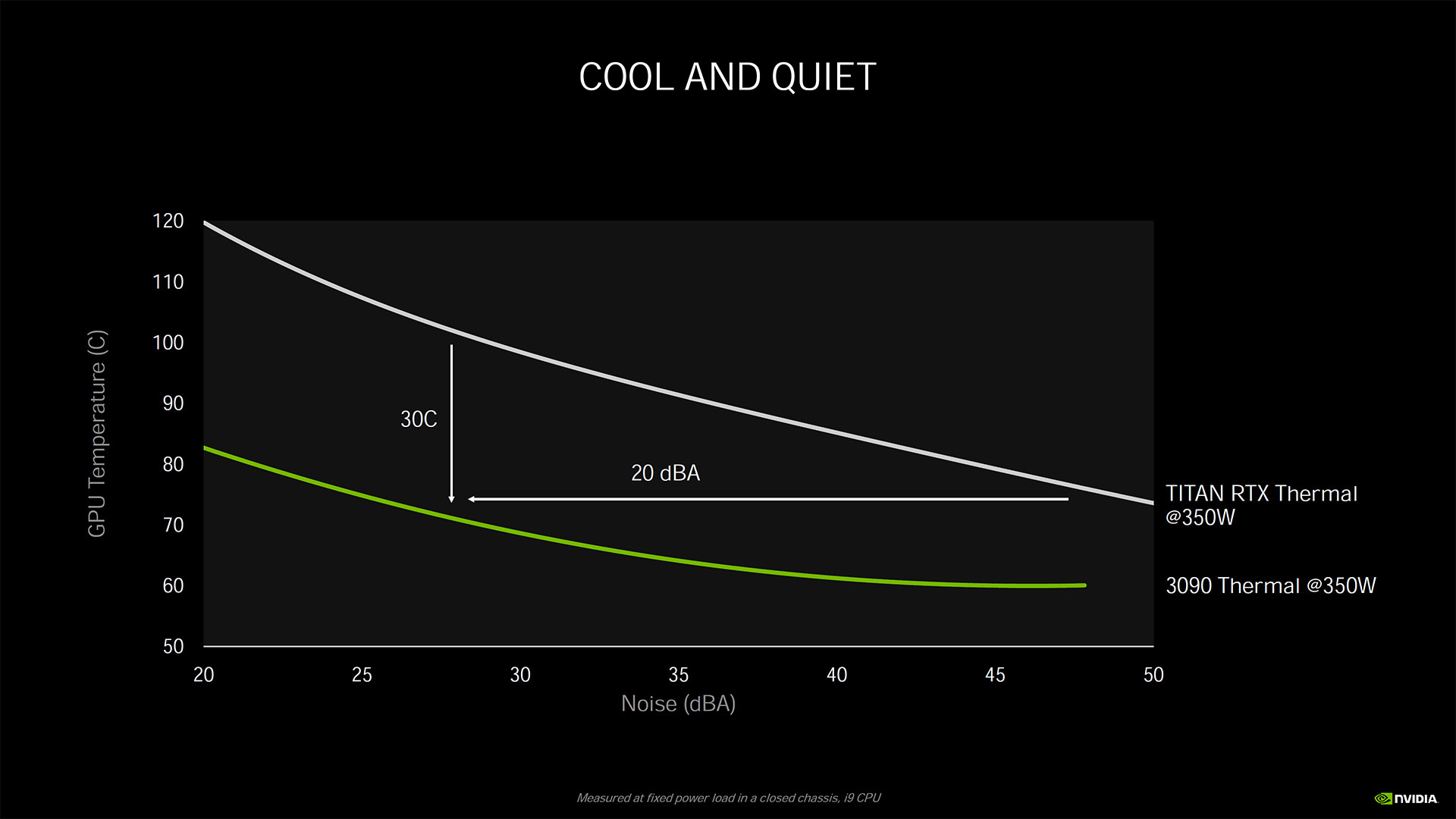
The RTX 3080 cooler is two slots wide, and the RTX 3090's cooler is three slots wide. Nvidia boasts that you can push high overclocks on the RTX 3090 FE card and it'll still run cool and quiet.
Get Tom's Hardware's best news and in-depth reviews, straight to your inbox.
But the real question is, how will the new design affect CPU temperatures? The 3080 and 3090's right fan will directly exhaust air into a CPU tower's heatsink, which is causing concern.
Usually with graphics cards, the actual heat being pumped out of the card is more important than where it directs all that heat. If you look at most graphics cards today, they intake air from the front (where the fans are), and eject most of that heat back into the case, thru the sides of the card. All that heat will reach your CPU cooler eventually in some form, and it can cause case ambient temps to rise. However, we won't be sure how the new coolers will impact case thermals until the cards land in our labs.
The official launch date for Nvidia's GeForce RTX 3080 is set for September 17. We'll have more to say about cooling by then, once we've put the card through its paces.

Aaron Klotz is a contributing writer for Tom’s Hardware, covering news related to computer hardware such as CPUs, and graphics cards.
-
nofanneeded show the 3 slots RTX 3090 , I think that the left fan near the slot bracket in the bigger 3 slots has tall fins above the vapor chamber thats why they used 3 slots.Reply -
nofanneeded There are cases with inverted motherboard orientation where the GPU faces the upper case fans and not the bottom while the CPU is at the Bottom ... Maybe thats a better case .Reply
Also , May be Just Maybe some modders can flip the direction of that fan making the intake comes from the CPU direction ? it wont take in hot air because it will be near the front fans ... and it will blow down and into the cards Area and not into the CPU area .. -
Chung Leong Can I ask Jarred Walton to smoke cigars while reviewing new Ampere cards? The smoke will let us see the airflow.Reply -
Gurg Wonder what percentage of high priced top end Nvidia GPUs buyers don't already use an AIO or closed loop cooling system for their CPU to get the most out of their PCs? My guess is that Nvidia has a pretty good idea and this is the tail trying to wag the dog!Reply
CPU reviews (including TH) that compared AMD CPUs with those "excellent wraith air coolers" LOL showed a 3-4% performance increase by substituting an AIO. AMD reportedly stopped providing those "excellent wraith coolers" with its high end CPUS. -
Gurg Will the new Nvidia GPU cooler design prevent the build up of dust from clogging the cooler? It should certainly be easier to blow out the straight through cooler on the right side of the card with pressurized air. In the same vein, why don't the GPU fans have screens on them to block dust from the fan intake? I actually have two screens on the intake for my CPU AIO, vacuum them probably every month and dust still builds up on the radiator fins and needs blown out.Reply
Despite periodically blowing out the CPU radiator fins with can of pressurized air, when moving to a new CPU (generally upgrade every 4 years) I've been shocked at the the amount of dust stuck in the radiator when flushing it with water in the sink.
As a 3080 may well max out my 60hz 4K monitor, it may make sense to purchase one with a closed loop AIO cooler attached this time around. -
AnjaliKataria16 arjun Kapoor shares breakfast picture with a witty song.Reply
This is a really nice post! Informative also. Thank you for posting this and giving us ample of information. -
SkyBill40 The cooler design with a push/pull arrangement is quite innovative and useful; however, in the day of vertical GPU mounting, using a FE card doesn't seem to make much sense as the benefit would be greatly reduced as I would imagine it. People with that kind of arrangement would be better off waiting for an AIB card with a traditional fan arrangement which may end up working better than this design anyway. Still, for those of us who don't mount out GPUs vertically, this isn't a terrible idea.Reply
